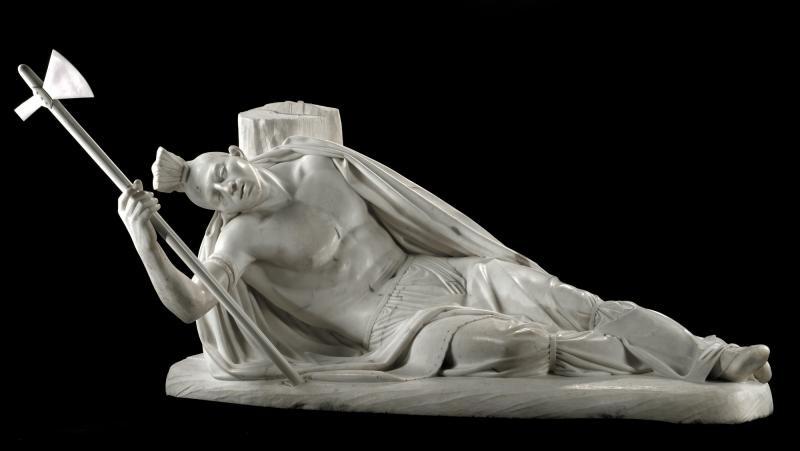

A Legacy
No paintings or sculptures were ever made of Tecumseh in his lifetime, but romanticized images, such as sculptor Friedrich Pettrich’s The Dying Tecumseh (1856), soon became common. In contrast, Tecumseh’s brother and other survivors of the unification movement were removed to the West, where Tenskwatawa died at Argentine, Kansas, a few years after famed artist George Catlin painted his portrait (1830).
“I would say to him, ‘Brother, you have the liberty to return to your own country.’ You wish to prevent the Indians from doing as we wish them, to unite and let them consider their lands as a common property of the whole. You take the tribes aside and advise them not to come into this measure. You want by your distinctions of Indian tribes, in allotting to each a particular, to make them war with each other. You never see an Indian endeavor to make the white people do this. You are continually driving the red people, when at last you will drive them into the great lake [Lake Michigan], where they can neither stand nor work.”
—Tecumseh address to General William Henry Harrison, Territorial Governor of Indiana



